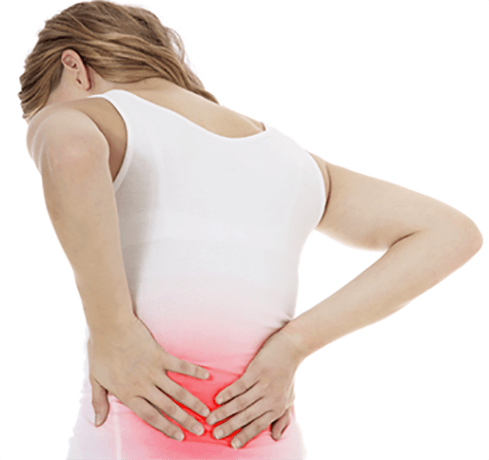Osteochondrosis is one of the most common pathologies of the spine.In this disease, spinal cord tissue and intervertebral disc is affected.Often, osteochondrosis affects the lumbar region, as it is that the maximum load when walking, sitting, walking and other activities.
If treatment does not start in time, then the disease can cause radiculitis, intervertebral hernia, lumbago, ishias, defects.
Stage of development
The disease is usually divided into several stages:
- Stage 1- There are minor changes in the intervertebral disc, the spinal column is not defective, one feels a little pain in the bottom.
- Level 2- The pain in the affected area becomes stronger, the violation of the intervertebral disc becomes more noticeable.
- Stage 3- There is an intervertebral hernia, a defective spinal column.Patients feel severe pain in the affected area.
- The 4th stage- It is difficult for someone to walk and make any movement.Pain occurs with little movement.At this stage, the last, the patient is defective, as a rule.

Cause
Often, people with professions or types of activities are associated with physical energy and large burdens in the lumbar department: builders, movers, utility workers, and athletes subject to osteochondrosis.Also, pathology can occur in teachers, cashiers, office workers, as they spend most of their time in a sitting position.
There are many factors that influence the occurrence of osteochondrosis:
- Lack of physical energy, exercise an inactive lifestyle.
- Strong load in the lumbar region.
- Joint and spinal diseases.
- Lumbar spinal injury.
- Flat feet or clubs.
- Obesity.
- Poster disruption, wrap.
- Scoliosis or kyphosis.
- Long hypothermia.
- Age -related changes in the spine.
- Genetic predisposition.
- Some diseases of the cardiovascular, nervous, endocrine system.
- Incorrect nutrition.
Symptom
The main signs of the bottom osteochondrosis are:
- Strong pain in the lower back, sometimes giving up on the feet and strengthening during movement, sneezing, coughing, etc.
- Continued tension of the back muscles.
- Inability to straighten the back after staying long in the same position.
- Unpleasant sensations when tilted or backward.
- Lamp at the bottom.
- Loss of sensitivity in the back, hips.
- Goosebumps, a tingling sensation in the foot.
- Feet and feet.
- Continuous foot tension and cold feeling in the feet.
- Varicose veins.
- Potential violations in men.
- Irregular menstruation in women.

The main symptoms of the pathology are pain, when the appearance you need to consult your doctor immediately.
Diagnostics
The diagnosis of osteochondrosis begins with a thorough examination of the patient and the accumulation of anamnesis - doctors ask the patient about the cases of osteochondrosis in the genus, chronic illness, lifestyle, type of activity, joint disease and spine.
Further, experts set instrumental diagnostic methods, including:
- X -ray lumbar area- Allows you to detect the presence of pathology and the degree of vertebral damage.
- Computed tomography (CT)- a more accurate research method that allows you to determine the damage to the intervertebral disc, the level of change, the level of deformation of the spine.
- MRI-Allows you to study the intervertebral disc as a whole, providing information on small disturbances in the spine, used in difficult cases or if the examination of the examination using CT or X -Ray inspection is unclear.
- Myelography- a type of diagnosis in which contrast agents are used to detect intervertebral hernia.
Based on the data, the specialist determines the pathological level and prescribes the necessary treatment.
Treatment
The treatment of osteochondrosis is performed comprehensively.The necessary medications and procedures are prescribed only by the doctor, individually.
First of all, the patient is prescribed several drugs based on NSAIDs -Anti -Anti -Ssteroid medicine that can relieve inflammation and eliminate pain in the affected area.Chondroprotectors are also prescribed - medicines that stop the process of cartilage and cartilage tissue.Vitamins that improve the condition of the whole organism are prescribed as an additional remedy.
For many spinal diseases, including osteochondrosis, physiotherapy is prescribed.The procedure can improve blood circulation in the wound, relieve tension from the muscles, eliminate pain and inflammation.With osteochondrosis, electrophoresis, acupuncture, magnetic therapy and other procedures are prescribed.
Patients are also prescribed massage, mud baths or hydrotherapy that are possible to relieve tension and muscle fatigue, relieve it, and increase blood flow.Muddy mud baths can eliminate the inflammation process.
In the first stage of the disease, exercise therapy is prescribed - color gymnastics, performance that helps restore spinal mobility, to strengthen the back muscles.At 3 and 4 stages of osteochondrosis, this type of treatment is not used.
Diet is very important in the treatment of this disease - it should be included in a mineral -rich diet - fruit, vegetables, porridge.Make sure you eat low meat, as it is rich in protein - it will be most useful for eating chicken or turkey.It is useful to use consumed milk products.It is recommended to reduce the amount of fatty, sharp, smoke, fried dishes.It is important to observe drinking mode - make sure you drink at least 1 liter of clean water daily.
With osteochondrosis in the lumbar region, treatment in the sanatorium will be useful, where experts during patients in the complex will treat the disease, and the patient is always under the supervision of a doctor.
If conservative treatment methods do not help, then surgical treatment methods are used.During operation, the affected wheel or cartilage is replaced by implants.And if there is an intervertebral hernia, then it is removed.
Prevention
- Limit the load at the bottom.
- Play sports, do morning exercises.
- Eat right.
- Try to avoid lumbar spinal injury.
- Avoid lower back hypothermia.
- With long seats, change your body position more often, get up and do easy exercises for warmth or just walk.
- Save the right posture, do not bend.
- In the event of a flat or flat foot club, use a special orthopedic insoles that reduce the load on the spine.

















































